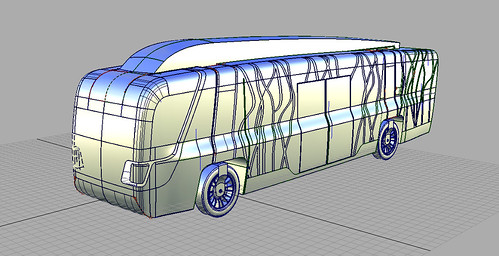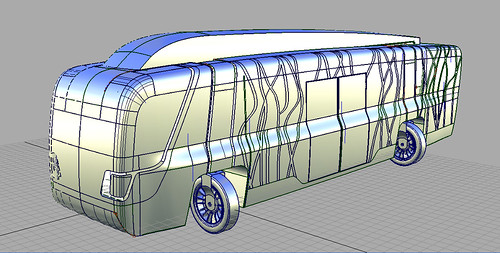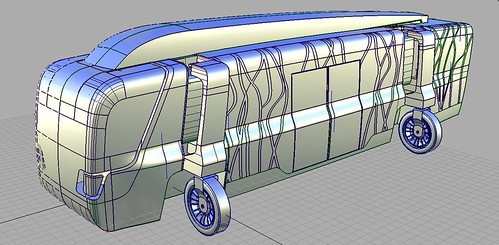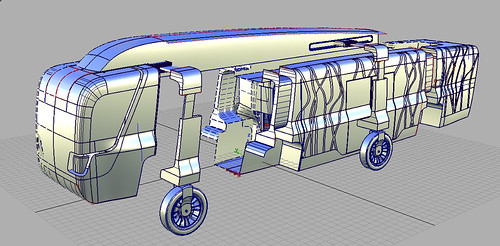
Step 1: The bus must be at a complete stop before the passenger cell exchange begins.

Step 2: The wheels of the bus turn 90 degrees. The “legs” of the chassis move outward until they are no longer touching the bus.

Step 3: The “legs” of the chassis extend vertically lifting the chassis above the passenger cell. The wheels rotate back into the original position for forward motion.

Step 5: The chassis drives forward and leaves the current passenger cell behind. Now the rest of the bus can be serviced more efficiently. Later, a new passenger cell of any length can be reinserted into the chassis.
0 comments:
Post a Comment